You might think that, if someone needed a truck in New Zealand, they’d have tons of options — Nissans, Toyotas, and probably even some new Chinese offerings. Why, then, did a man named Chris Cains decide that, for his epic Aotearoa adventure, he should import a Chevrolet Silverado ZR2 and convert it to right-hand drive to the tune of $151,500? I chatted with Cains to find out.
After wrapping up a 25-year career in the hotel industry, Cains and his wife, Lynette, are in the midst of fulfilling a dream: traveling long-term around their home country of New Zealand. With an off-road-ready Titanium Caravan Hardcore camper spec’d to their needs, they had to find a truck that could tow the 21-foot beast.
With a landscape so stunning and also treacherous it seems almost like fiction (i.e., Middle Earth), you’d think full-size pickups would be an easy sell. But that’s not the case. Driven Car Guide reports that New Zealand’s best-selling vehicle for 10 years running is the Ford Ranger, with the Toyota HiLux and Mitsubishi Triton also in the top 10 — so trucks do get plenty of love — but, as has been the case since car-based “utes” abounded, the “trucks” out there aren’t that big (in part because of high fuel prices).
Though “big” is what Cains wanted.

Big trucks are a mere blip in Australasia. And Chevy? Blink and you’ll miss it. With just two vehicles (Corvette and Silverado), the brand sold just 262 in New Zealand. Of those, data from the Motor Industry Association shows 230 fell under the light commercial vehicle category, which includes trucks. Suffice it to say that Cains’ truck is rare, and he chose it with very specific goals in mind. From Cains:
There were really only two choices in New Zealand for a suitable tow vehicle when it came to towing a 3.5-tonne Aussie-built off-road [Titanium] Caravan and all the gear we would need to make the trip enjoyable. Both are American: the Chevrolet Silverado and the Dodge Ram. The choice was relatively easy.
The Chevy Silverado ZR2 variant ticked a lot of the boxes with standard extended travel in the suspension, plus its twin front and rear diff lockers with tow mode. With all the safety features and creature comforts for long drives and a combined gross mass of 6800 kgs, the ZR2 was the clear winner.
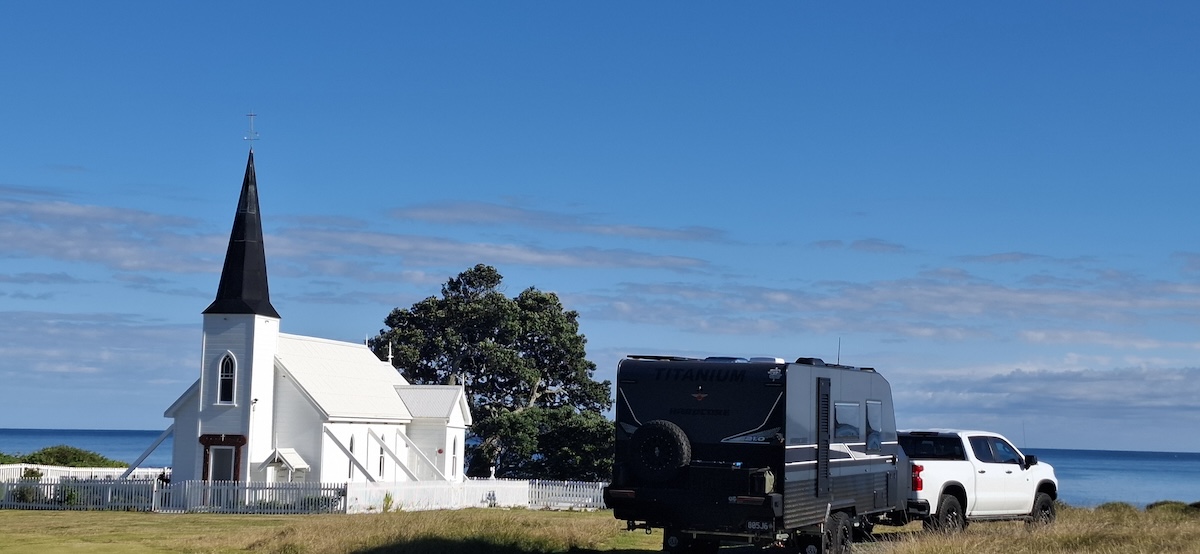
Still, his perfect pickup came with a hefty price: $139,000 NZD. At last year’s exchange rate, that’s about $84,000 USD. Add-ons further pushed that amount higher. According to GM Authority, the Silverado 1500 ZR2 debuted in 2022 with a starting price of $70,195 USD. This off-road performance variant was introduced to the Australasia market a year later, according to the GM enthusiast site.
Cains ordered his 2023 Silverado ZR2 through General Motors Special Vehicles (GMSV), the successor to Holden Special Vehicles. The truck’s 6.2-liter V8 produces 420 horsepower and 460 pound-feet of torque. The GMSV spec Silverado ZR2 also includes the Technology Package. Shipped from the GM’s Silao, Mexico, plant, Cains’ six-figure price tag for this 2023 model did include the right-hand-drive conversion. GMSV has a New Zealand location, but Cains’ truck conversion actually took place in Australia.
GMSV parent company Walkinshaw Group saw a need for more output and opened a dedicated factory for RHD conversions in August 2022. Aussie Destinations Unknown was offered a behind-the-scenes tour that year. Oliver Lukeis, commercial director for Walkinshaw Group, shares some background on the facility at the 6:22 mark in the video above. At the time, the location employed about 150 people — including warehouse staff, engineers, and manufacturing personnel — who remanufactured and reengineered 16 trucks a day.
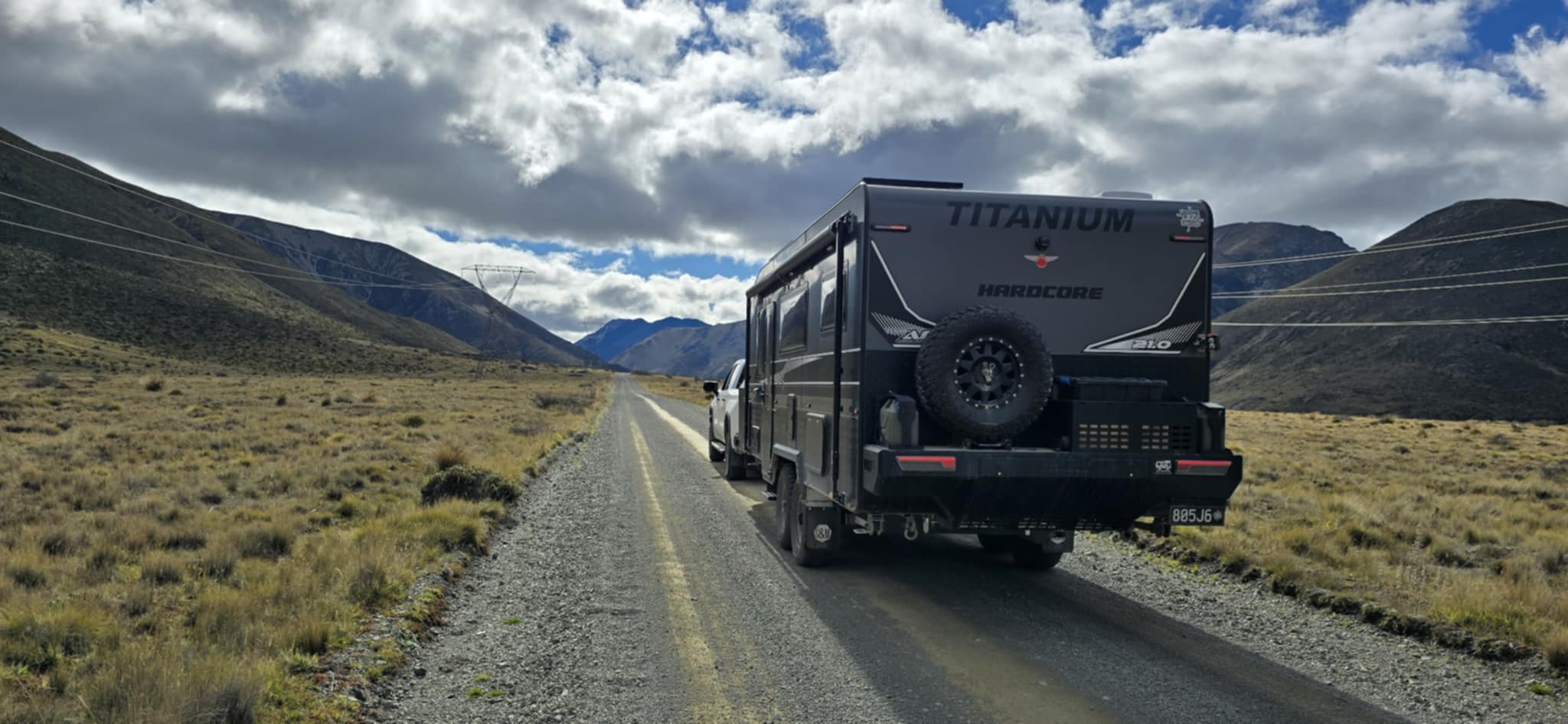
Lukeis said the factory was operating two shifts and hoped to increase daily production to 18 units. Undoubtedly, a large number of RHD conversions are done through Walkinshaw Group, which is an Australasian partner of several automakers. I reached out to GMSV regarding the factory’s current workload and market share, and will provide those figures should I receive a response.
These vehicles have to essentially be partially rebuilt. At 7:33, Lukeis explains that everything from the steering rack and wiring harness to the IP and dash has to be changed.
Cains’ ZR2 had to undergo the same processes. Upon its arrival at the GMSV factory, the truck was disassembled and rotated through multiple stations. Each one handles a specific task, whether decontenting, welding, or reassembling. It’s a process that takes weeks. You can follow the full breakdown process at the 10:04 mark, and the below timelapse video from GMSV.
There are other custom shops that offer conversions, but doing so through certified companies means customers also maintain the vehicle’s factory warranty. Considering that the conversion process requires changing hundreds of parts and components, you’d want that reliability and peace of mind. Autogroup International (AGI) is another long-standing RHD conversion company, and CEO Rob Hill can’t stress enough how involved a vehicle conversion is. Via AGI’s YouTube channel, he said:
“There are about roughly 500 components that we change in each vehicle…What we do is extraordinarily complex. I mean, we are a full-fledged automotive manufacturer. We are playing with major systems in a vehicle — steering, braking, all of the technology, obviously, the physical elements of the dashboard, the list goes on. So you know, converting a vehicle from left-hand drive to right-hand drive is not something that you do in a shed.”
As for a timetable, Hill said when working with an all-new model, the conversion can take months as the team learns the vehicle and makes adjustments. Once everything is up to speed, it’s a matter of weeks. According to the AGI FAQ page, the entire order-to-export process takes roughly 3 to 4.5 months.
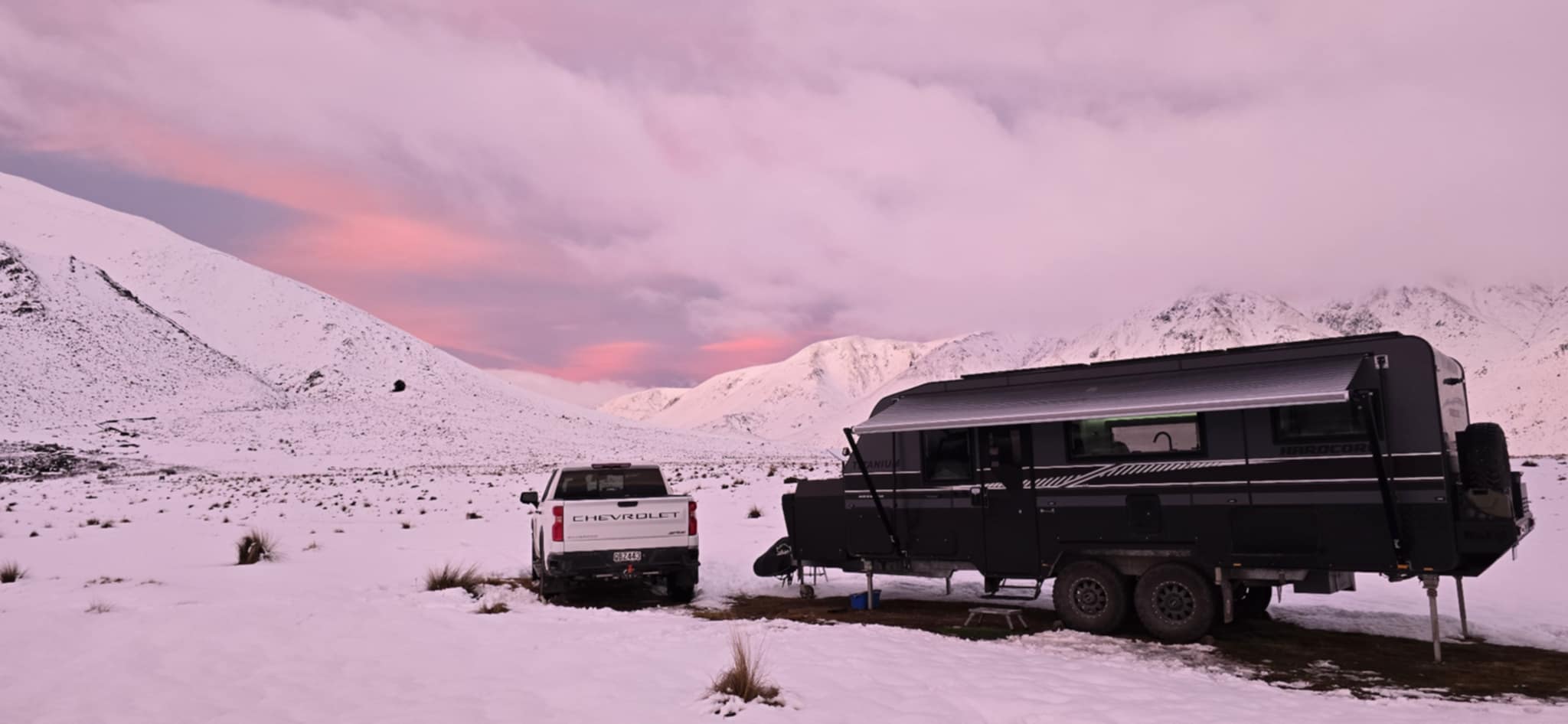
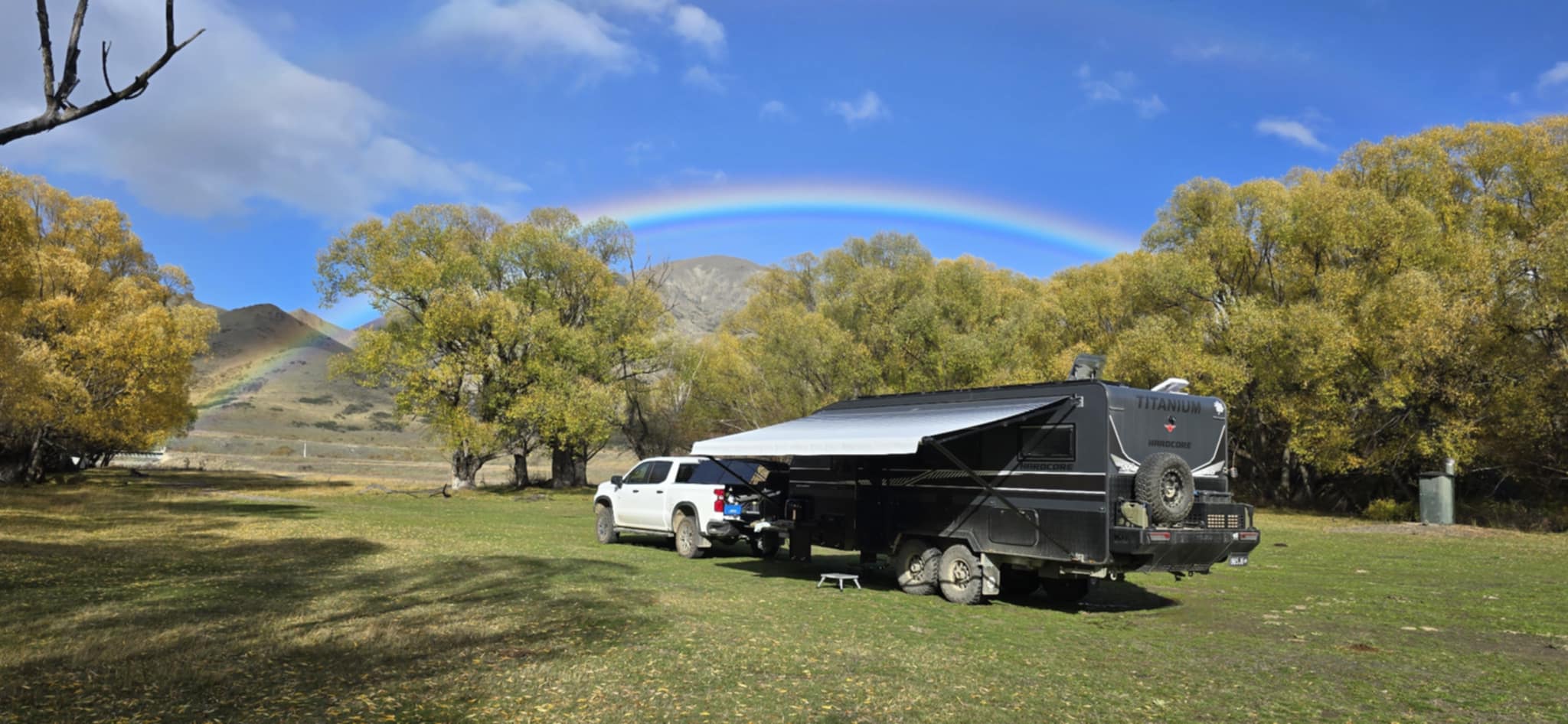
Cains doesn’t recall how long the conversion process for his truck actually took, but there was more work to be done once he got it back from GMSV. Beyond the factory-optioned side steps and folding tonneau cover, which cost another $5,000, Cains sought out the aftermarket to make his rig more robust for off-road living. He said:
“An airbag suspension to the rear and a remote-controlled compressor were added in order to level the ride when towing the caravan. The air compressor hose outlet enables inflation of tyres on both the truck and the caravan when returning to the tarmac after being off-road.
Also, a 120-litre fresh water tank was installed to increase water capacity for off-grid purposes, plus a water pump to transfer and filter the drinking water from the truck to the caravan, as well as offer the ability to pump water from alpine rivers and lakes.”
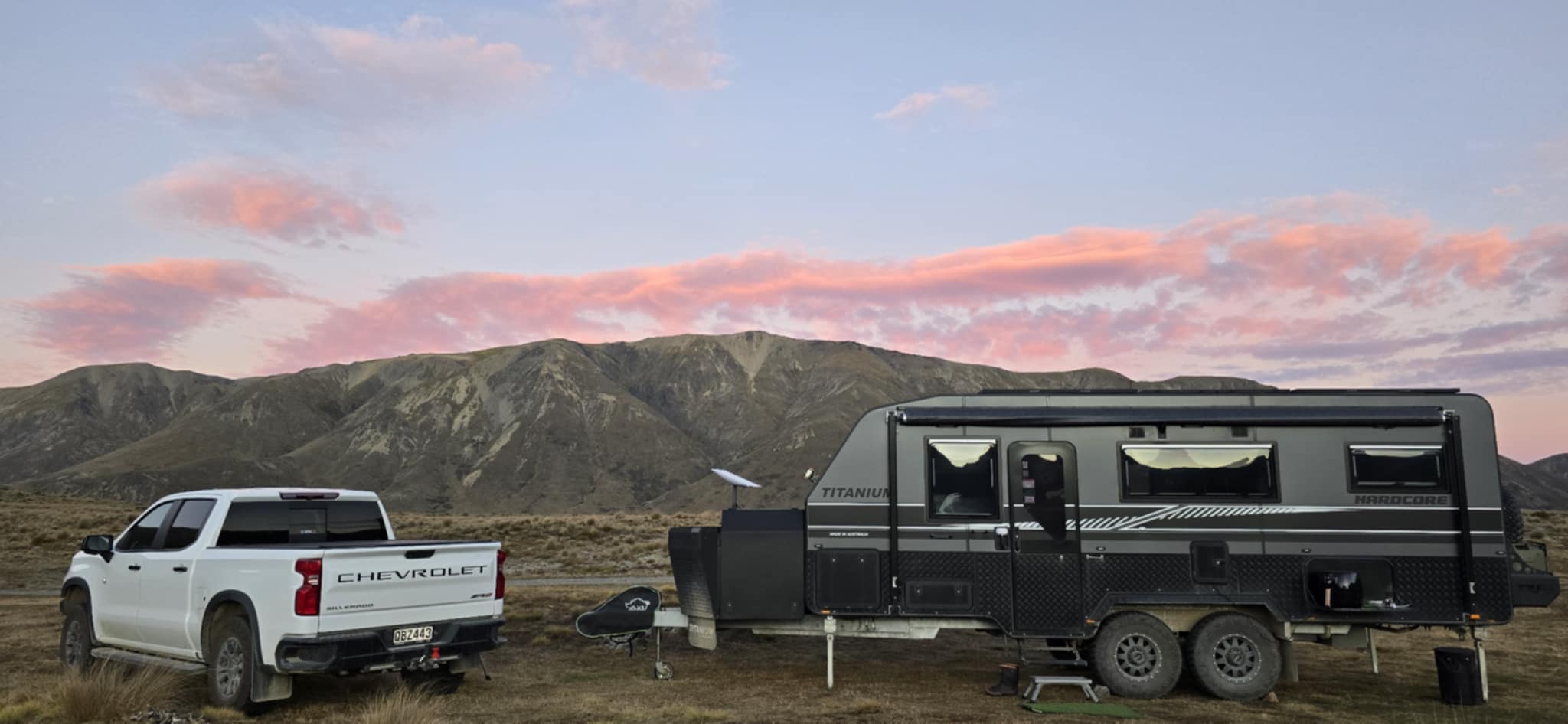
These aftermarket parts added another $7,500 to the bottom line, but the truck had to be as ready as his camper, which itself is no joke. Titanium Caravans builds rugged, all-weather, all-road motorhomes meant to go as far off the grid as you can travel. And based on Cains’ photos, he and Lynette have been everywhere that isn’t a sprawling city. Despite recent safety concerns in Australia regarding the size of big pickups, Cains has no doubts about his Chevy. He wrote:
We don’t see many ZR2s in New Zealand. The truck does get a lot of attention…but it’s also perfectly suited to the size of the caravan. We feel safe in it and always drive based on the weather and road conditions.
Given what he knows now with wait times and cost, Cains said he’d absolutely make the same choice again.
“The truck was specifically purchased to tow our Titanium caravan to remote camping areas, and the capability and performance of the ZR2 has not let us down.
The ZR2 is perfect for our needs, well worth the cost and effort. Definitely no regrets.”
Thanks to Cains, who says he bought his truck for “[their] absolute ability to tow a 3.5t caravan off road with safety & comfort top of the list. Plus, they are so unique in NZ. It’s a perfect match really,” the world now has photos of an American full-size pickup driving around some of the world’s most iconic landscapes, halfway around the world. Enjoy:

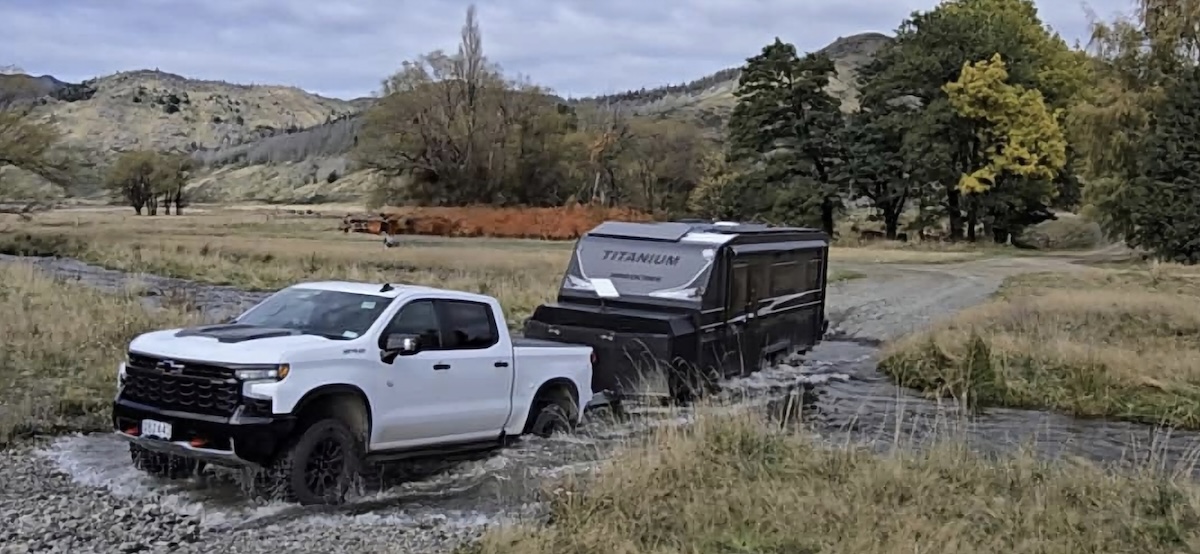
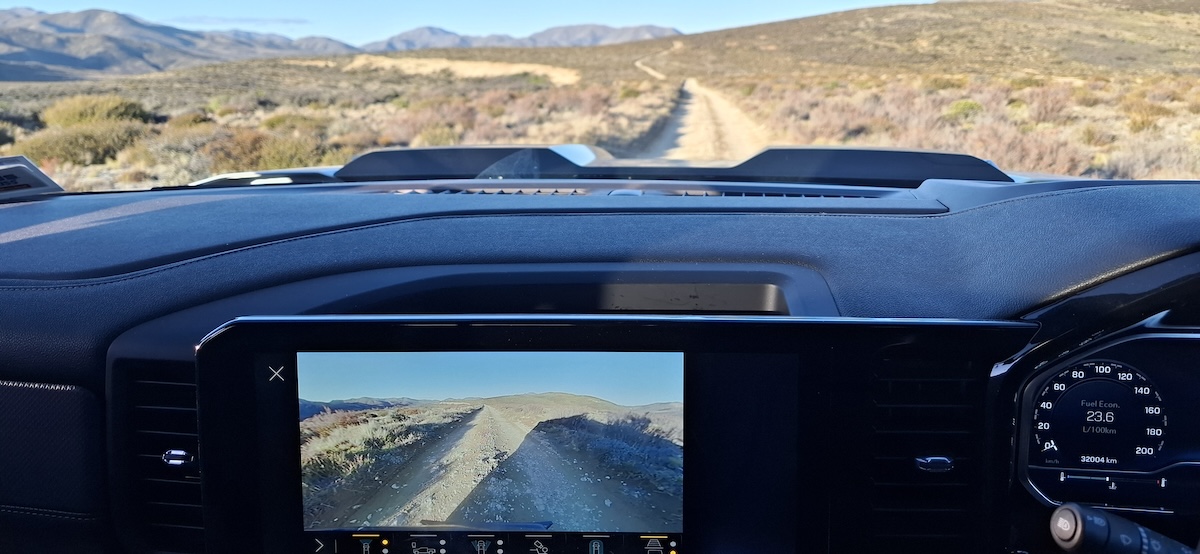
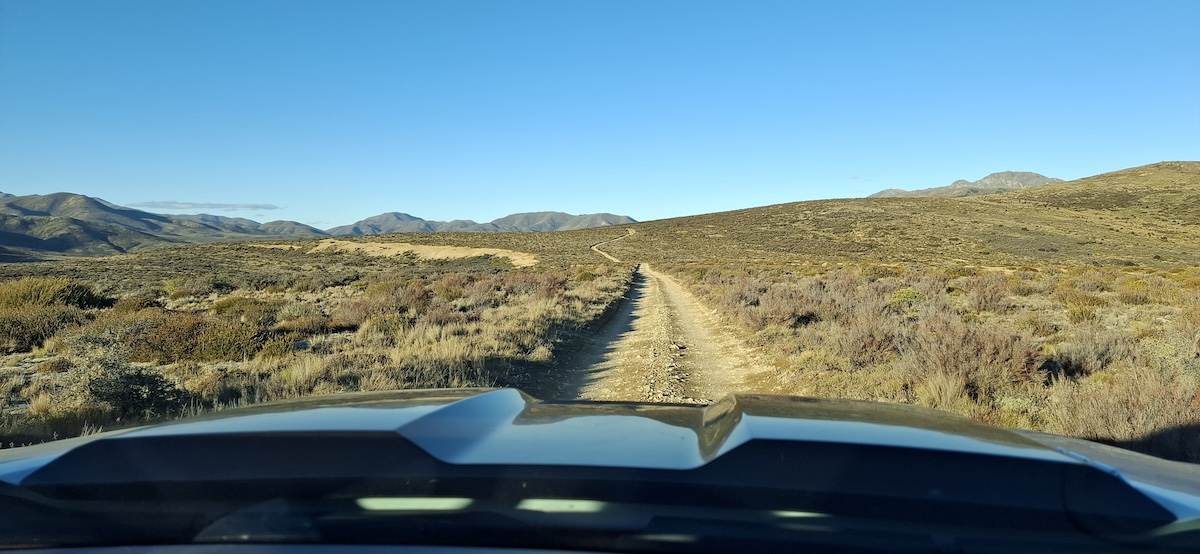
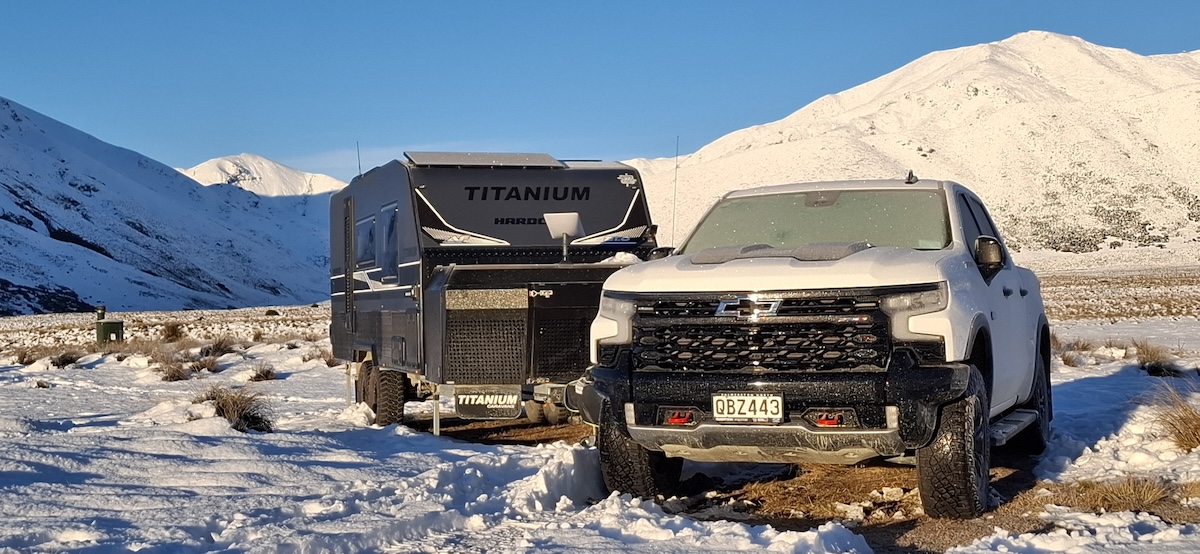
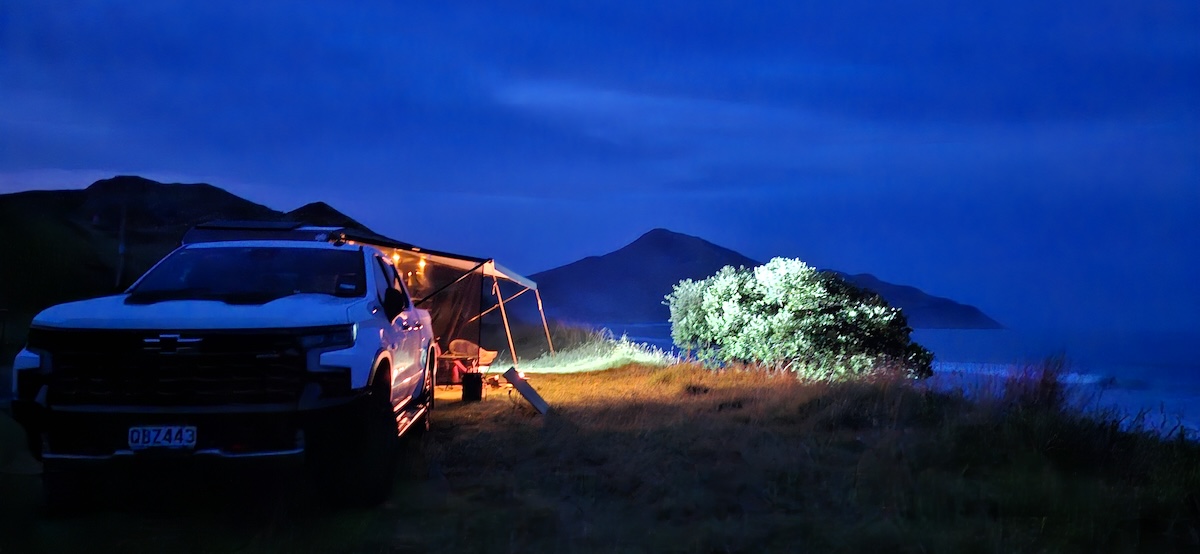
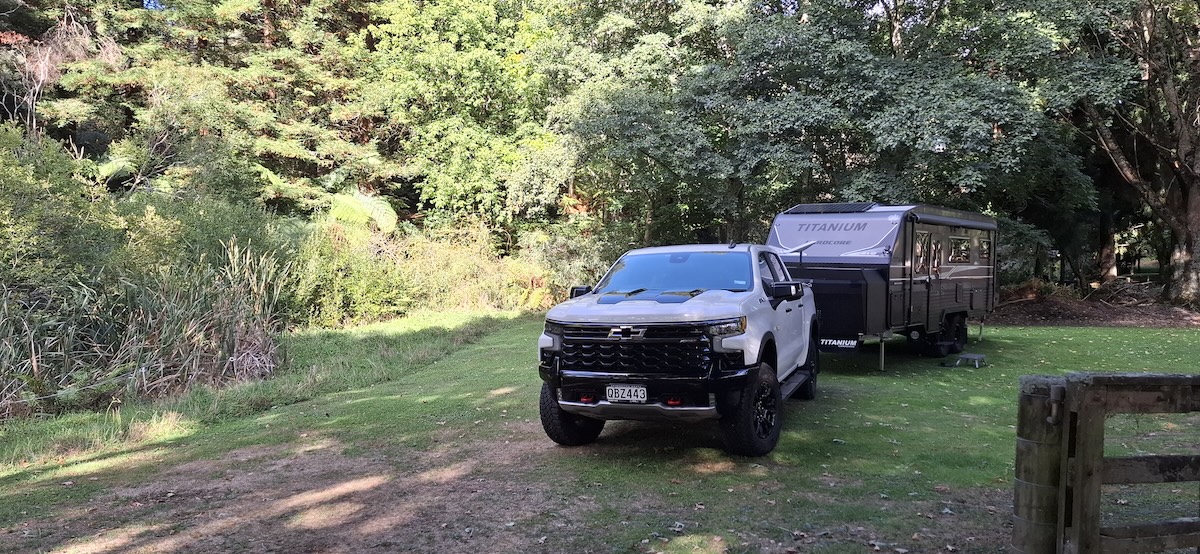
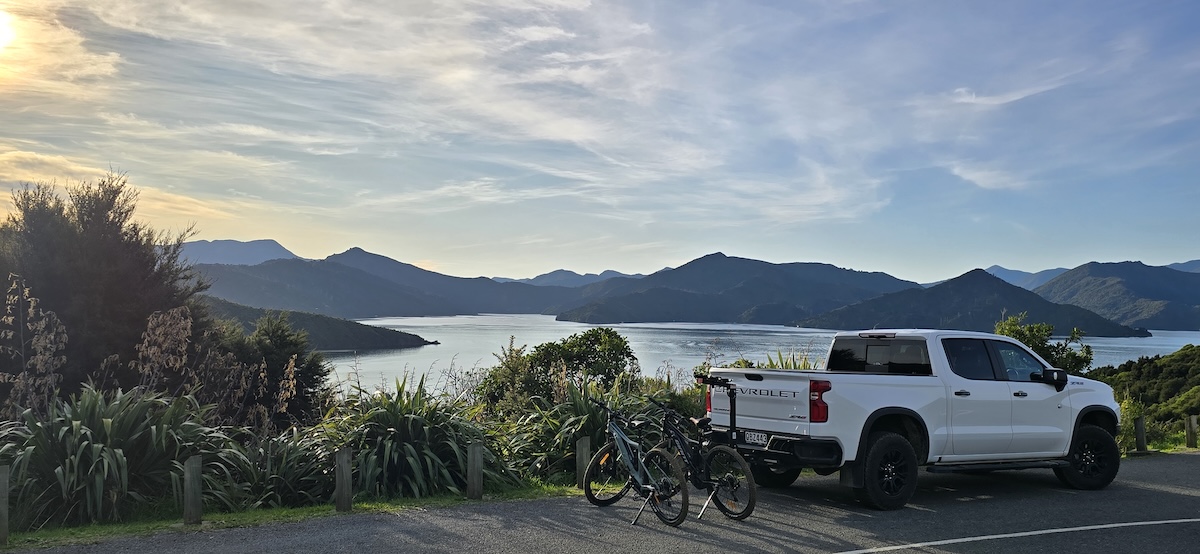
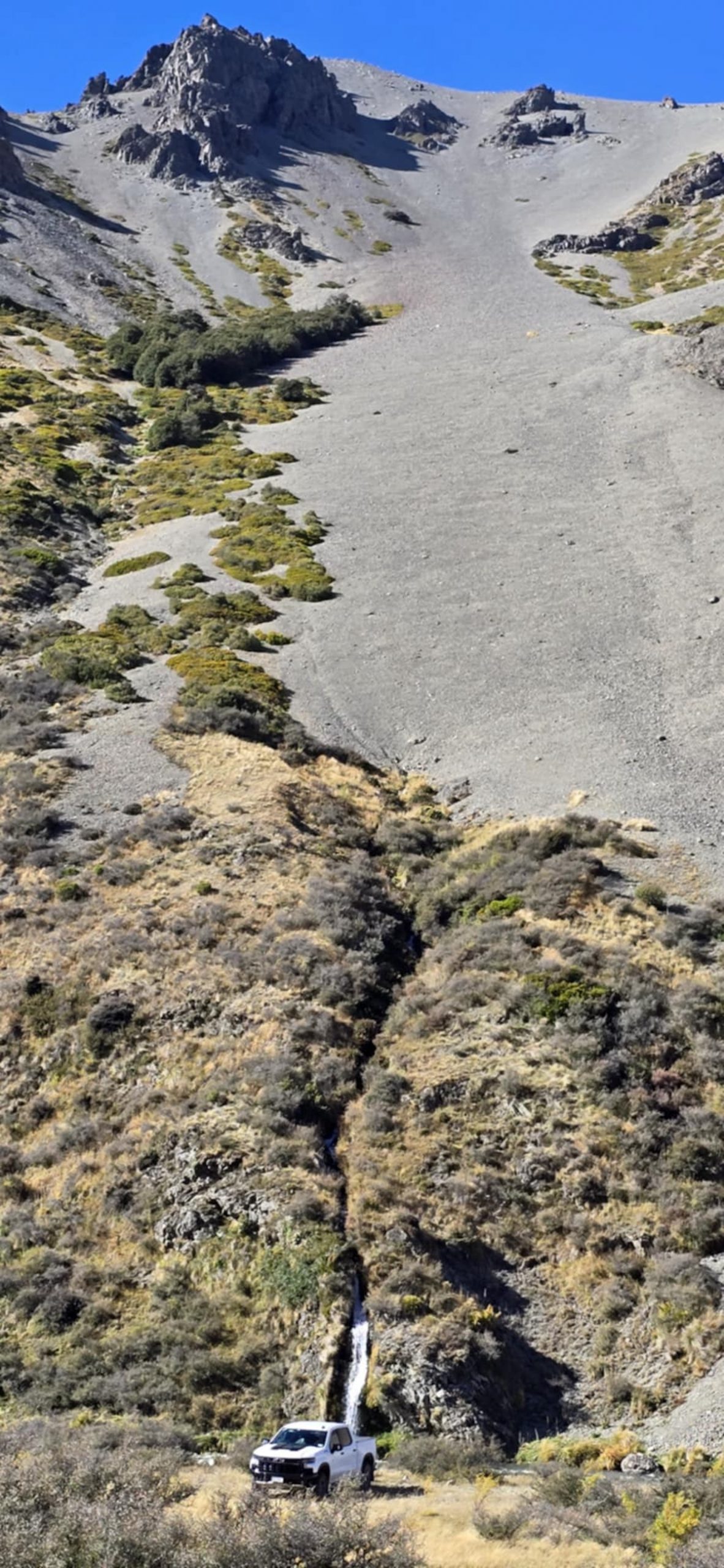
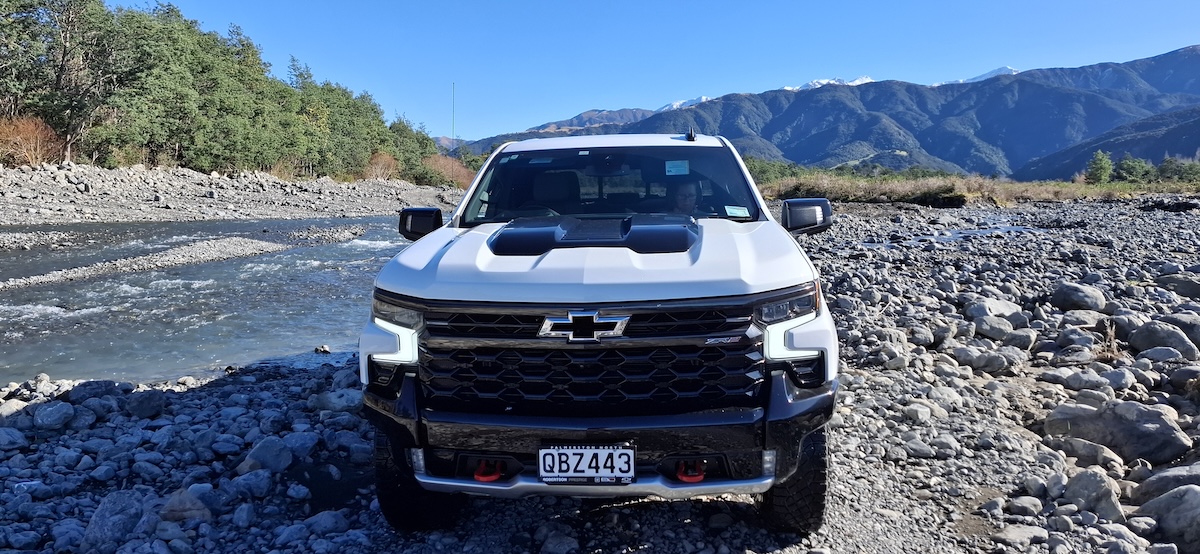
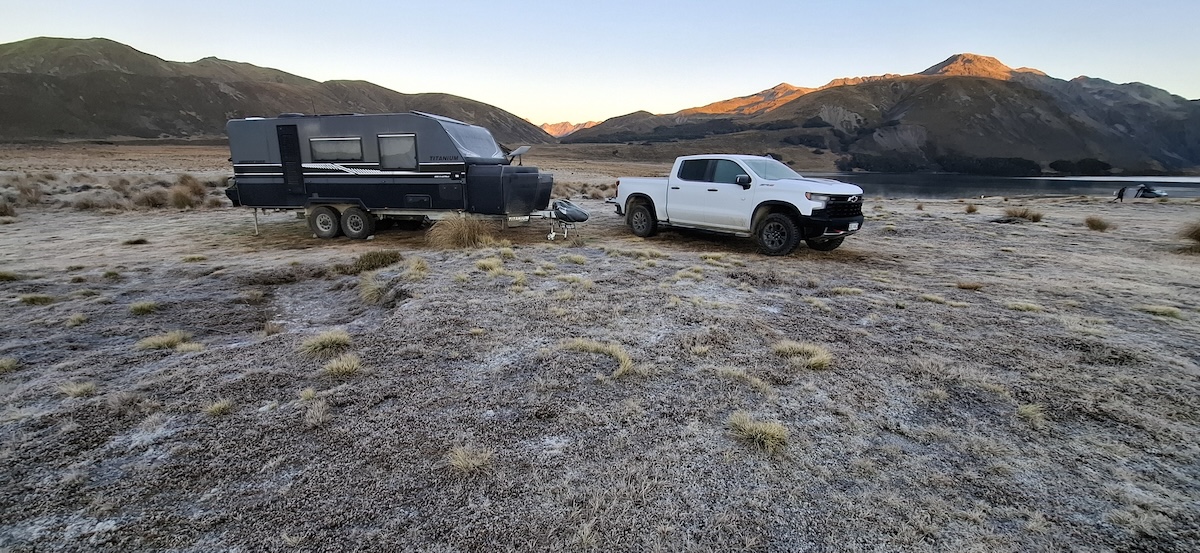
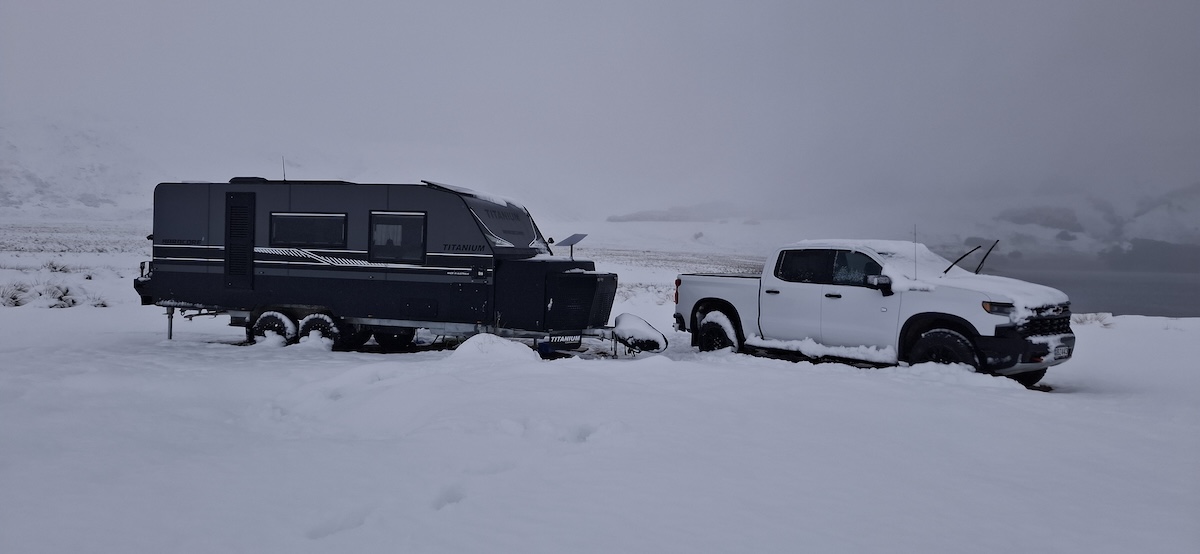
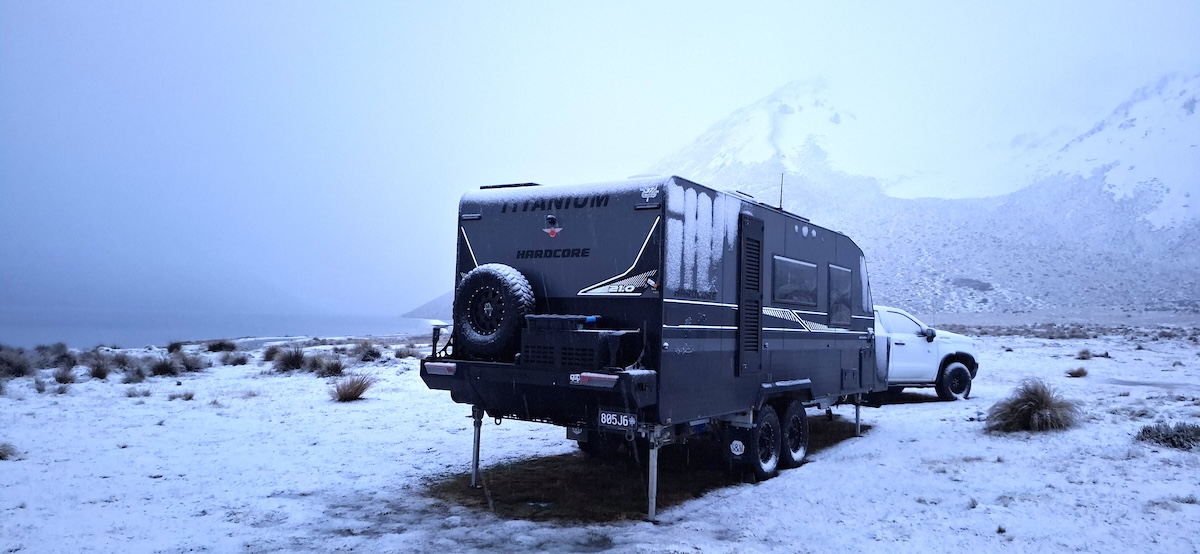
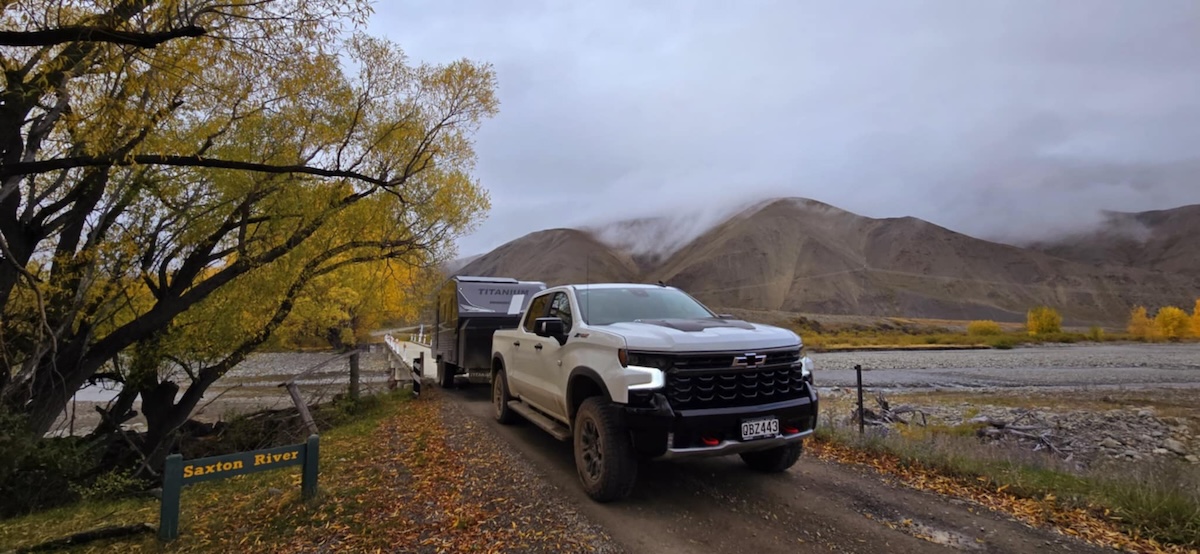

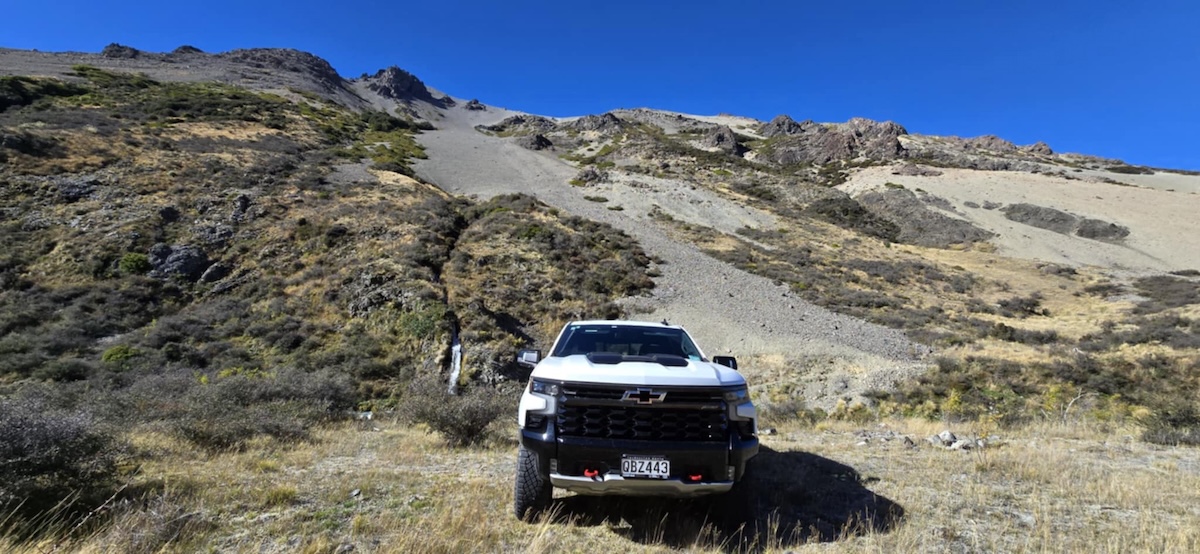
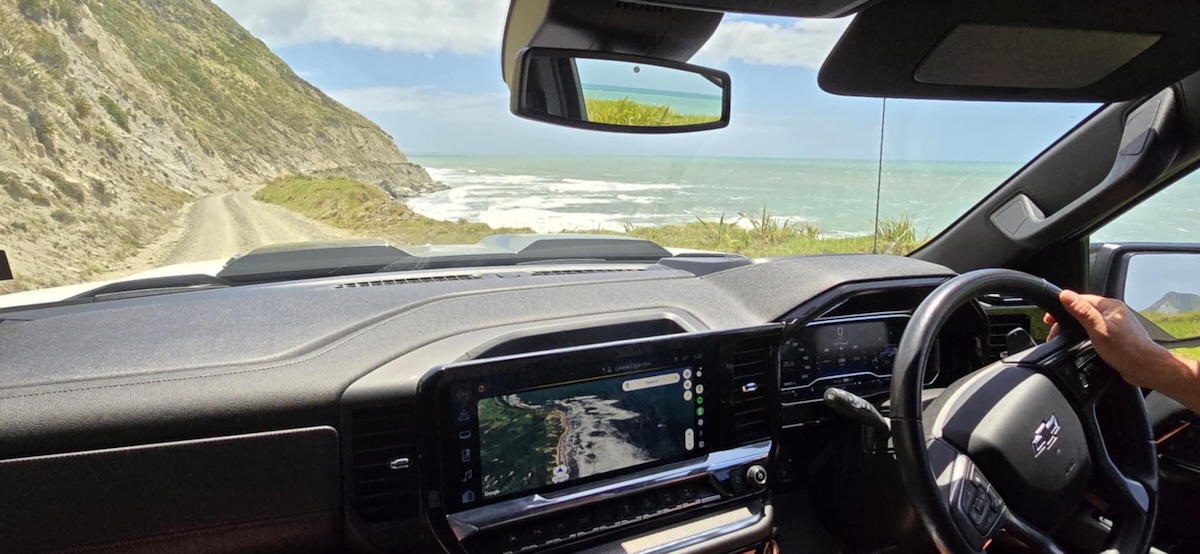
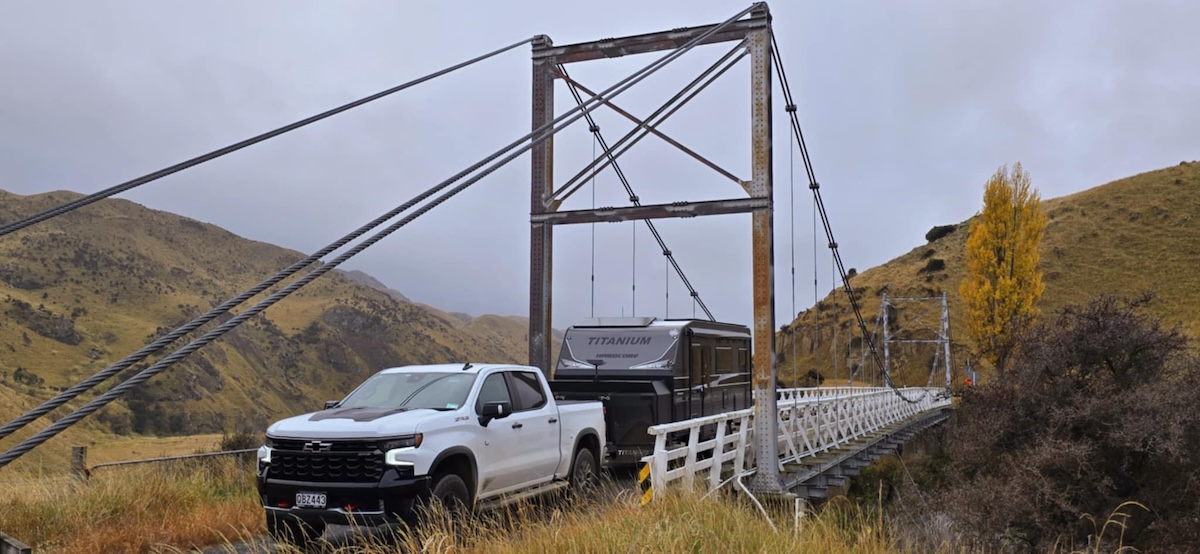
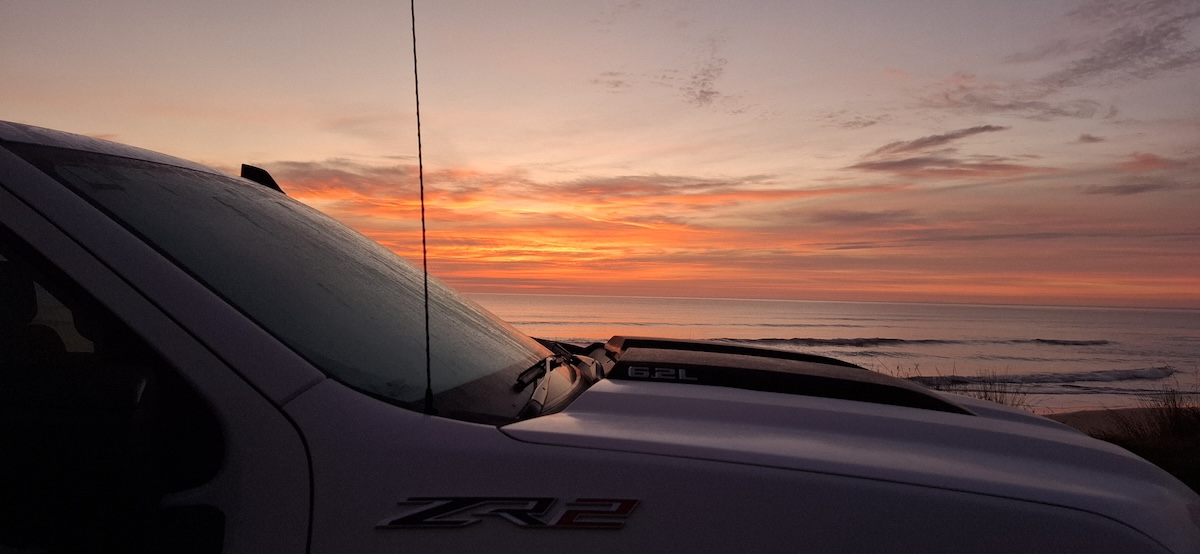
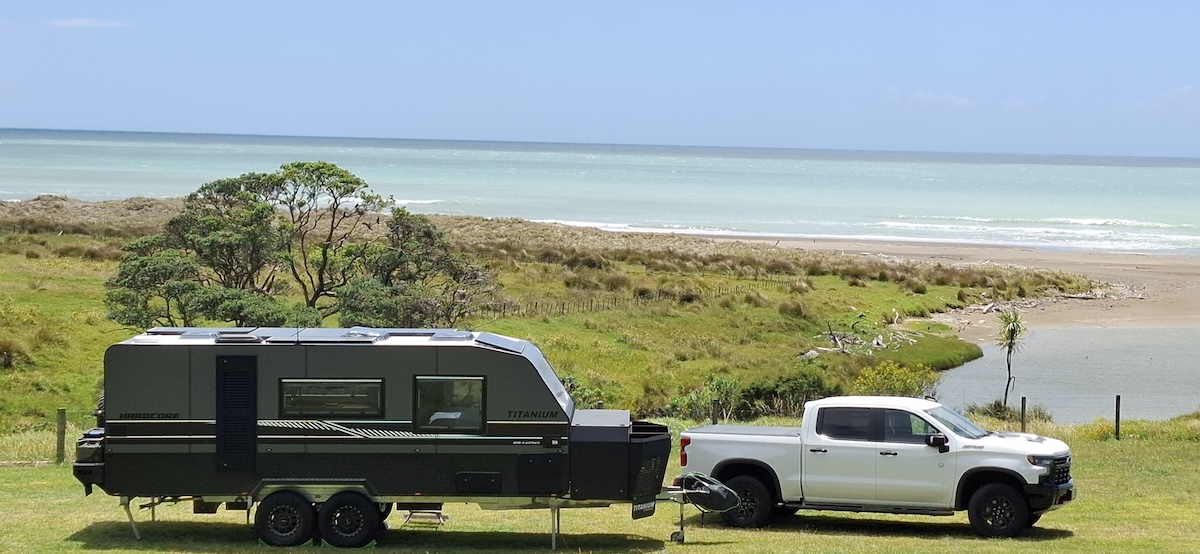
Top graphic image: Chris Cains

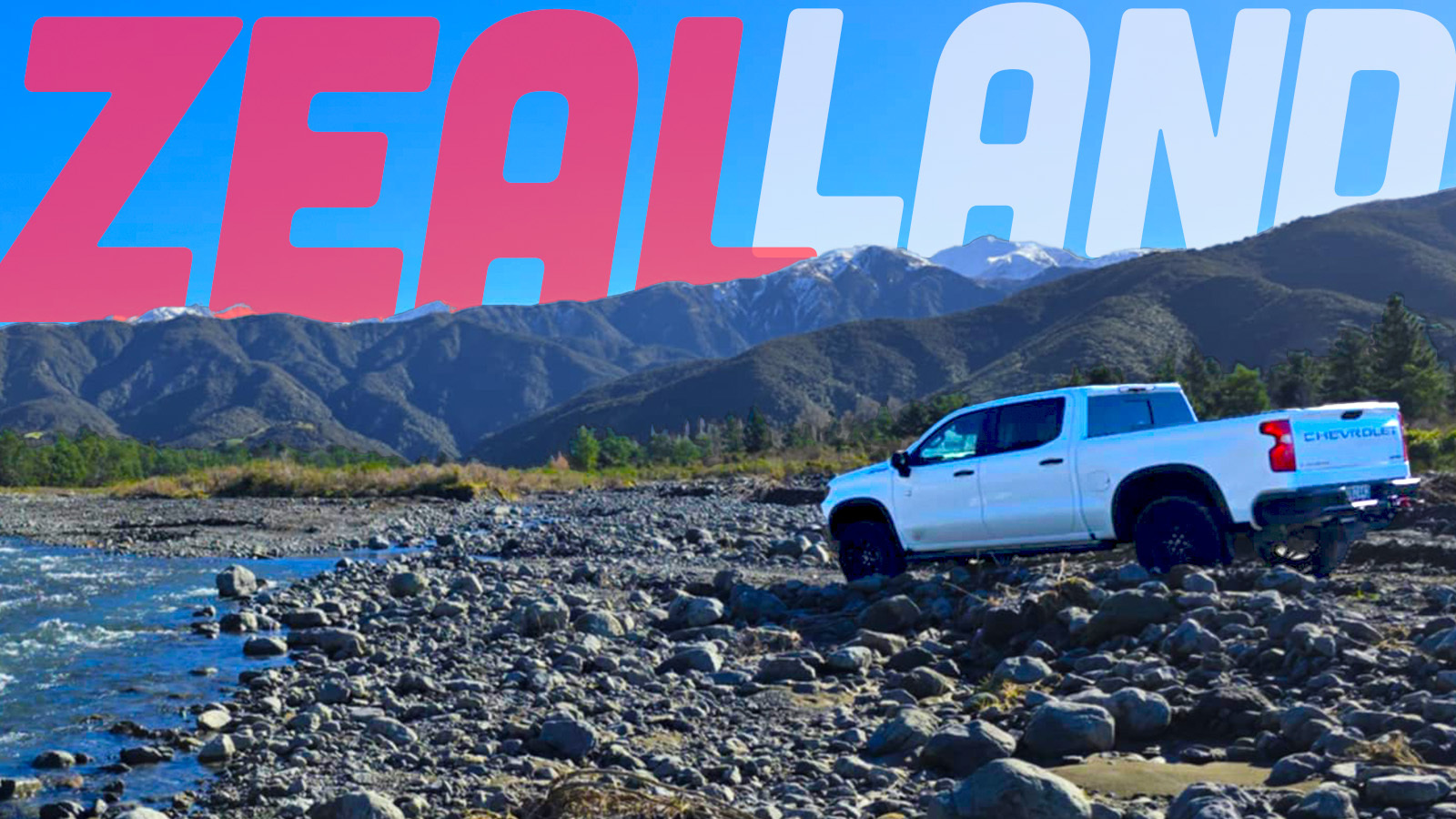




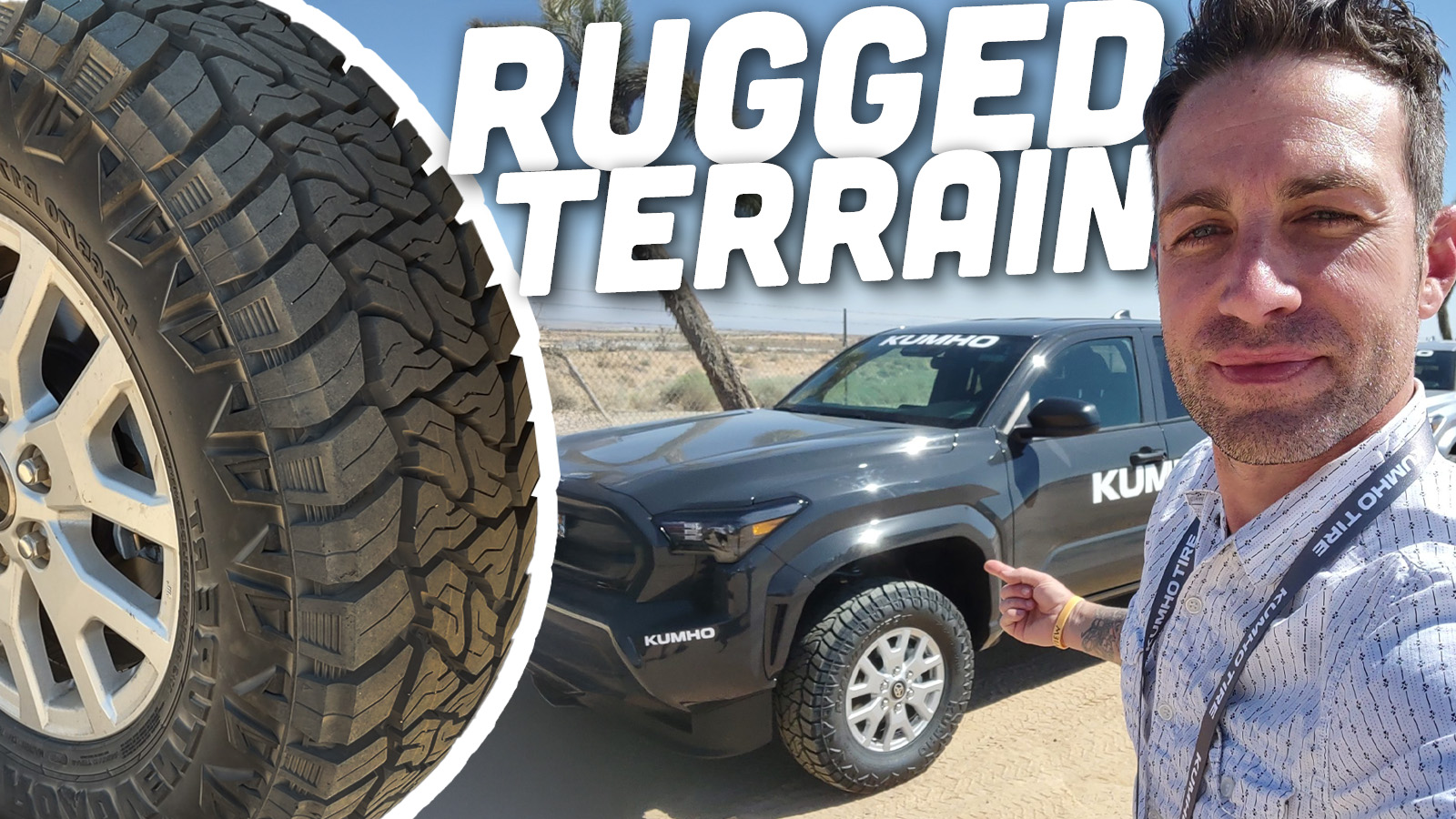
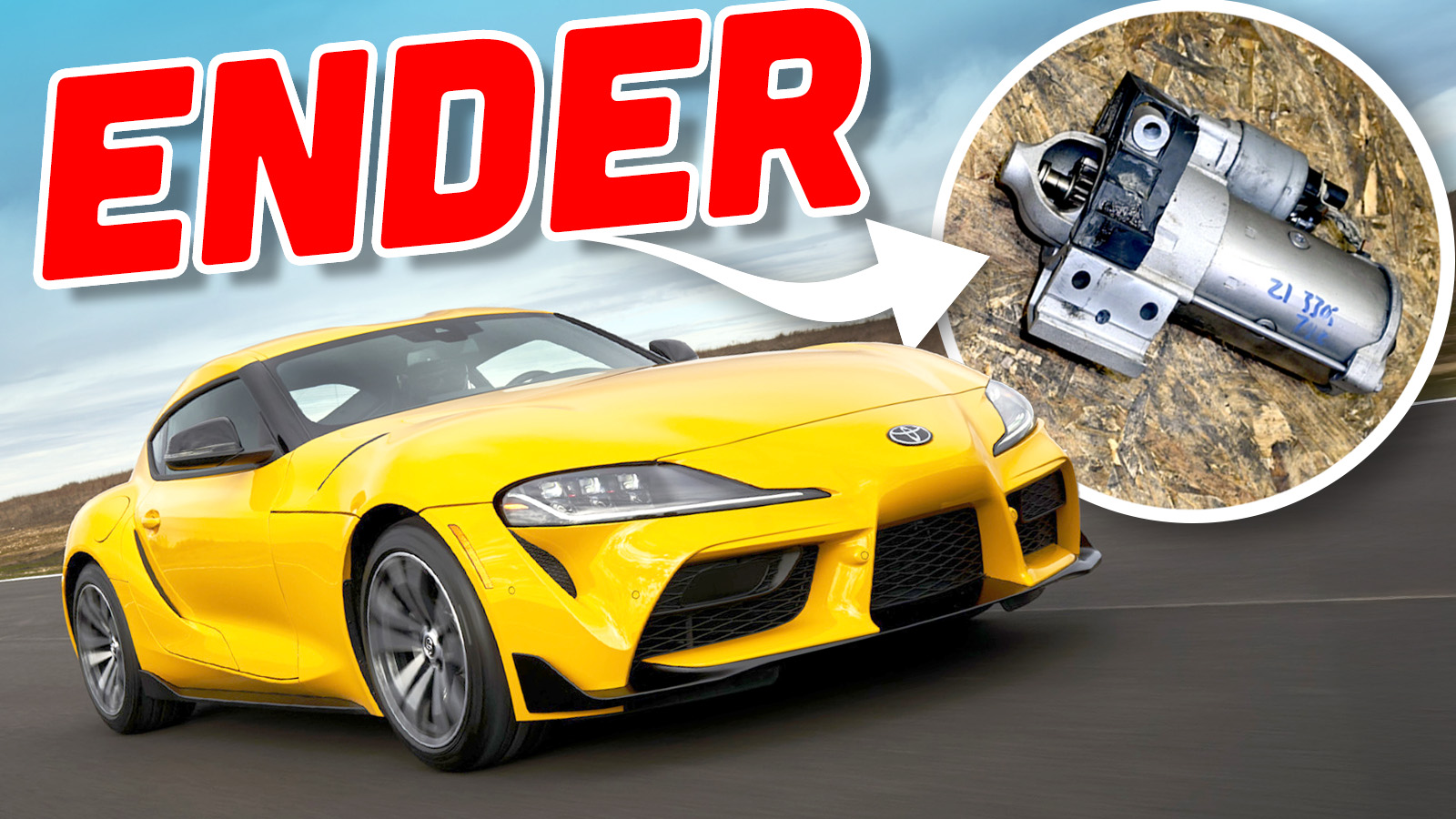
Full size RHD converted trucks aren’t especially rare here. I’m based in the central suburbs of Auckland and my next door neighbour has a late, RHD converted, F150 Raptor. My daily is an ’01 Z28 Camaro which was imported second hand from Japan 6 years ago and is perfectly legal in LHD.
Awesome story, here’s hoping that 6.2L doesn’t leave them stranded.
So gosh darn cool!
I’m not seeing how he “Imported it and had it converted” he ordered it from GM through their existing sales organization, just like anyone can, well at least if they have the $$$.
Yeah, I read it as, blah, blah, blah, rich people pay for American truck that was converted to RHD.
I love reading reviews on American full sizers in AU and NZ. Half of the comments are people screaming about how terrible they are in their country, and the other half are people excited to get something that can do all of the things that American pickups are good at: towing and hauling in comfort and competence.
Policeman tapped his shades, “Is that a Chevy ZR2?” HOW BIZARRE!
For New Zealand’s sake I hope this doesn’t start a trend of big stupid trucks becoming popular there
There are the odd number around. Given that petrol sits around $2.70 per litre and the 1500 size trucks all have petrol engines, they are never going to be big sellers. Although the Tundra (still under consideration for NZ) is only offered with the hybrid in Australia it may sell well here if it does come. Ford have opted not to sell the F150 in New Zealand. Our roads are small narrow and windy. It can be a struggle to park our X5 in lots of car parks, large pick ups just don’t work because of this.
That said the Ranger and Hilux are usually the top selling cars here and they aren’t small.
My brother and I recently watched a RHD Ford F450 dually drive up his cul-de-sac and down again as the driver looked for a parking spot a few Saturdays back.
With cars parked on the road both sides, you can imagine there wasn’t a whole lot of room for this truck and my guess is the driver needs a class 2 light commercial license, because it def had a few extras, so would be over the 3500kg weight limit for standard car license.
Compared to the Chevy Silverado ZR2 above, or RAM 2500, the F450 was a behemoth and TBH, it looked freaking ridiculous!
Now, this is just me, but if I imported a RHD car from overseas, to be driven in the US, I’d just go against Judge Smail’s advice and not move the steering wheel to where it belongs.
That being said, there’s a realtor from Oz on House Hunters who wears a ten-gallon hat, a giant belt buckle, and drives a brodozer. And his name is Jesse James, for God’s sake. I don’t remember which of the big 3 the truck was, but I’m positive it had RHD.
Quigley 4×4 used to do RHD conversions of GMT400 and GMT800 and Express vans, for a mix of export and postal applications. Ford also exports F series trucks, but I guess they weren’t the right fit
Yeah, Ford of Brasil would export the F-250 to Aus, NZ, and South African markets but it’s been a LOOOONG time since they’ve done that. They’d even sell them with the Powerstroke V8 instead of a Cummins 4 cylinder (for the South American market).
Ha, one can’t help but be reminded of the bumper sticker that some people used to put on their expensive RVs and campers that said WE’RE SPENDING OUR CHILDREN’S INHERITANCE!
I remember seeing that bumper sticker on a car while I was in college and thinking that’s kinda cruel. For the last 10 years or so I have been trying to get my widowed mom spend some of her significant savings on herself. It’s been very difficult. Now she’s developing dementia and my brother and I are in the process of moving her off a 20-acre farm she’s lived on for decades to a nice retirement community before she hurts herself or burns the whole place down. She’s not happy about it.
Okay, dumb question… I get that Japanese light-duty trucks aren’t up to the task, but aren’t there Japanese medium-duty trucks that would do just fine? I have to believe that Hino or Isuzu or somebody makes a 4×4 crew cab COE truck that would be up to the task.
Ford is introducing a Ranger Super Duty for 26 – 4.5t (9900lb) towing for just this reason.
Isuzu has the NPS, but it really doesn’t compare in terms of comfort and power to a Silverado. Its loud noisy and bouncy.
I would think it should compare on power, the NPR has the same engines as the Silverado. Everything else though, they are absolutely terrible to drive in anything but quick city deliveries.
The NPS here in Australia/NZ has a 5.2l 4 cyl diesel that puts out all of 153hp and 419Nm of torque, so way down on power and torque
I doubt they would be near as capable off-road without significant upgrades which decreases reliability and repairability vs OEM front and rear lockers and transfer case. Not to mention comfort.
I never understood why Ford, General Motors, and RAM currently don’t bother building the right-hand-drive trucks in North America or elsewhere. They do have lot of experience building them in the 1990s and early 2000s so no excuse for them farming the vehicles out to the remanufacturers.
General Motors builds the RHD versions of Chevrolet Corvette and Cadillac Lyriq, and soon, Optiq and Vistiq in the same manufacturing plants as LHD versions.
Ford do Brasil built the RHD version of first-generation Super Duty trucks for export to Australia (F-250 and F-350) and South Africa (F-250). Holden Suburban (1999–2001) were assembled in Mexico, using the stretched RHD dashboard from the second generation Blazer.
Seems to be a lot of hassle of disassembling the vehicles, cutting up the metal components and welding in new ones, discarding lot of LHD-specific components for RHD ones, rearranging stuff inside the dashboard and engine bay, reassembling them when they could be built on the same assembly lines.
If the vehicle is small volume such as Ford Mustang (SN95), that is understandable, yet it doesn’t make sense for trucks that are sold in tens of thousands per year to be remanufactured with lot of components discarded and never used again.
What a spectacular country.
nice pictures and story. I will say, if it was me and I spent that much time ordering a car, I would at least make the rig closer in color to the trailer. I mean, white? Ugh.
Wow looks like quite the adventure! Beautiful pics 🙂
A friend of mine is moving to NZ for a year abroad. I immediately started searching for vehicles for her to help her get an idea of what’s available. They have an interesting mix of stuff. Lots of JDM imports obviously. I still don’t get the point of spending six figures on a Chevy that’s been taken apart and reworked and re-computed. Just doing an aftermarket stereo in my used Silverado was an eye opener on how much modern vehicles rely on integrated sensors and systems. The door chime needed a module with the aftermarket stereo since it’s not a physical chime unit?! Crutchfield was great with supplying the gear, but the truck has ghosts in the system and the unit occasionally gets wonky and then reverts back to normal. I can only imagine the warranty headaches of owning that truck there.
We were fortunate enough to honeymoon in NZ and I remember my surprise when a Dodge Ram came around a corner. Don’t remember if it was left or right hand drive.
My understanding is that all newer vehicles must be RHD or converted to RHD to be licensed in NZ.
Looking at what’s involved and what it costs, I was wondering why anyone even bothers. Having it be required explains a lot.
It used to be that any vehicle less than 25 years old had to be converted to RHD in order to be legally registered in NZ. However, legislation was changed and newer vehicles can be imported and registered here and kept left hand drive, provided they are under a certain weight (around 3500kg from memory) and meet other somewhat ambiguous criteria. To do that however, they have to be ‘special interest’ vehicles and be on a specific list of approved vehicles. They originally had to be two door vehicles and had to have been featured in specialist magazines, or be otherwise recognised as performance vehicles (this is clearly open to interpretation as we have V6 Gen 4 Camaros around). Essentially though, if you can provide evidence it’s a ‘special’ vehicle and apply to have a specific vehicle approved, it can be imported. Of course there’s a whole lot more to that, with things such as emissions, occupant safety etc needing to be approved but that’s the gist of it. For some bizarre reason though, once the car is imported, it must stay with the first registered owner for four years…
Yes – I recall that loophole too from when I was investigating immigrating there w/ my Kiwi Husband.
I soon realized that my CLK Cabriolet was likely not going to be considered special enough.
“For some bizarre reason though, once the car is imported, it must stay with the first registered owner for four years…”
That’s to prevent import flipping.
Actually nice to see a Trail Boss get used for what it’s supposed to be rather than just being a pavement princess.
Meanwhile, Land Cruiser 70s are available in NZ and aren’t burdened with the GM 6.2 debacle.
The safety concerns aren’t for the occupants of the truck; they are for the public that needs to deal with them on roads that aren’t designed to handle vehicles of that size. What the owner has “no doubts” about has zero to do with the valid concern.
The safety concerns are about pedestrians. Since he is isn’t using it as a daily driver in a city his risk should be low to pedestrians.
Pedestrians, cyclists, and other people use the roads in places outside of the city. Regardless, the owner’s statement had nothing to do with the noted concern. He is happy he got what he wanted. He never addressed the concerns noted in the linked article.
Very true, since we never see the question asked of the owner I do wonder if he fully understood the question. Or was he asked “is it safe?”
Reguardless of what he gets anything that can safely tow (maintain speed) that is going to be on the larger side.
That bunch of hobbits going across the land begs to differ! They are on a mission and this guy could just wipe them all out! Though I suppose this is a modern alternative to the “just fly on the eagles to Mt Doom” question.
70 series aren’t in the same class, rough and agricultural vehicles and incredibly expensive for what they are,
Understood. But a full-size Chevy with a failed engine design for $151k is a far worse deal. For any off-road adventure, it seems strange to prioritize a cushy seat over off-road capability and reliability.
I wasn’t saying the Chevy is the best option, but there are so many better options than a 70 series. Can’t imagine travelling the country in one of those, I drive a 20 year old Nav and its still more refined and comfortable than my mates brand new 79.
Given current exchange rates, that $151k NZD translates to about $90k USD now… given the amount of labor, time and materials that likely goes into a RHD conversion, that’s not a horrible price, all things considered.
I’m not sure that total is in NZD.
.
Not at all, that’s basically a steal. It’s not impossible to get a 1500 pickup to near $90k USD and that’s right here in the home market with no conversions.